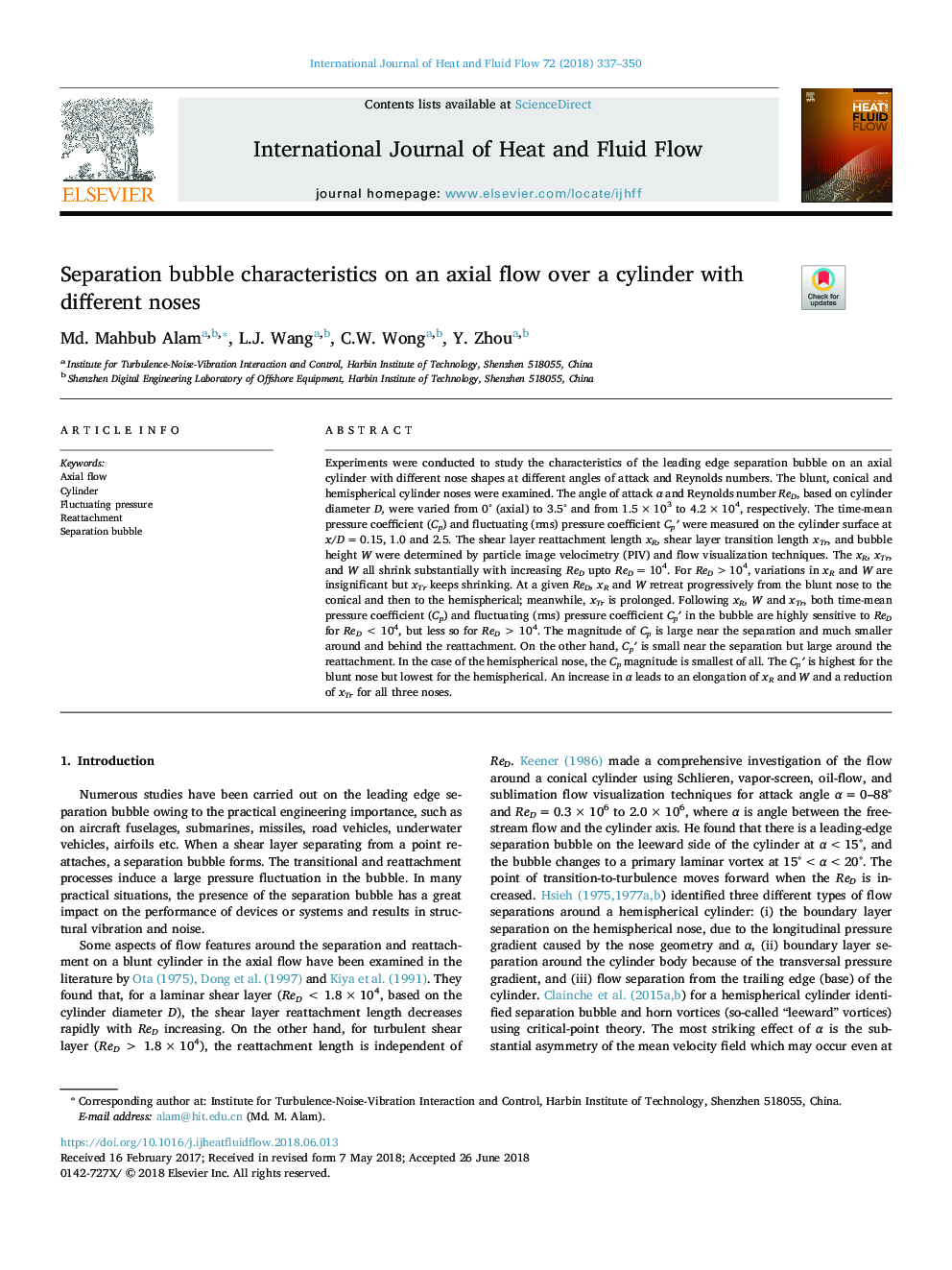| Article ID | Journal | Published Year | Pages | File Type |
|---|---|---|---|---|
| 7053437 | International Journal of Heat and Fluid Flow | 2018 | 14 Pages |
Abstract
Experiments were conducted to study the characteristics of the leading edge separation bubble on an axial cylinder with different nose shapes at different angles of attack and Reynolds numbers. The blunt, conical and hemispherical cylinder noses were examined. The angle of attack α and Reynolds number ReD, based on cylinder diameter D, were varied from 0° (axial) to 3.5° and from 1.5â¯Ãâ¯103 to 4.2â¯Ãâ¯104, respectively. The time-mean pressure coefficient (Cp) and fluctuating (rms) pressure coefficient Cpâ² were measured on the cylinder surface at x/Dâ¯=â¯0.15, 1.0 and 2.5. The shear layer reattachment length xR, shear layer transition length xTr, and bubble height W were determined by particle image velocimetry (PIV) and flow visualization techniques. The xR, xTr, and W all shrink substantially with increasing ReD upto ReDâ¯=â¯104. For ReDâ¯>â¯104, variations in xR and W are insignificant but xTr keeps shrinking. At a given ReD, xR and W retreat progressively from the blunt nose to the conical and then to the hemispherical; meanwhile, xTr is prolonged. Following xR, W and xTr, both time-mean pressure coefficient (Cp) and fluctuating (rms) pressure coefficient Cpâ² in the bubble are highly sensitive to ReD for ReD < 104, but less so for ReD > 104. The magnitude of Cp is large near the separation and much smaller around and behind the reattachment. On the other hand, Cpâ² is small near the separation but large around the reattachment. In the case of the hemispherical nose, the Cp magnitude is smallest of all. The Cpâ² is highest for the blunt nose but lowest for the hemispherical. An increase in α leads to an elongation of xR and W and a reduction of xTr for all three noses.
Related Topics
Physical Sciences and Engineering
Chemical Engineering
Fluid Flow and Transfer Processes
Authors
Md. Mahbub Alam, L.J. Wang, C.W. Wong, Y. Zhou,
